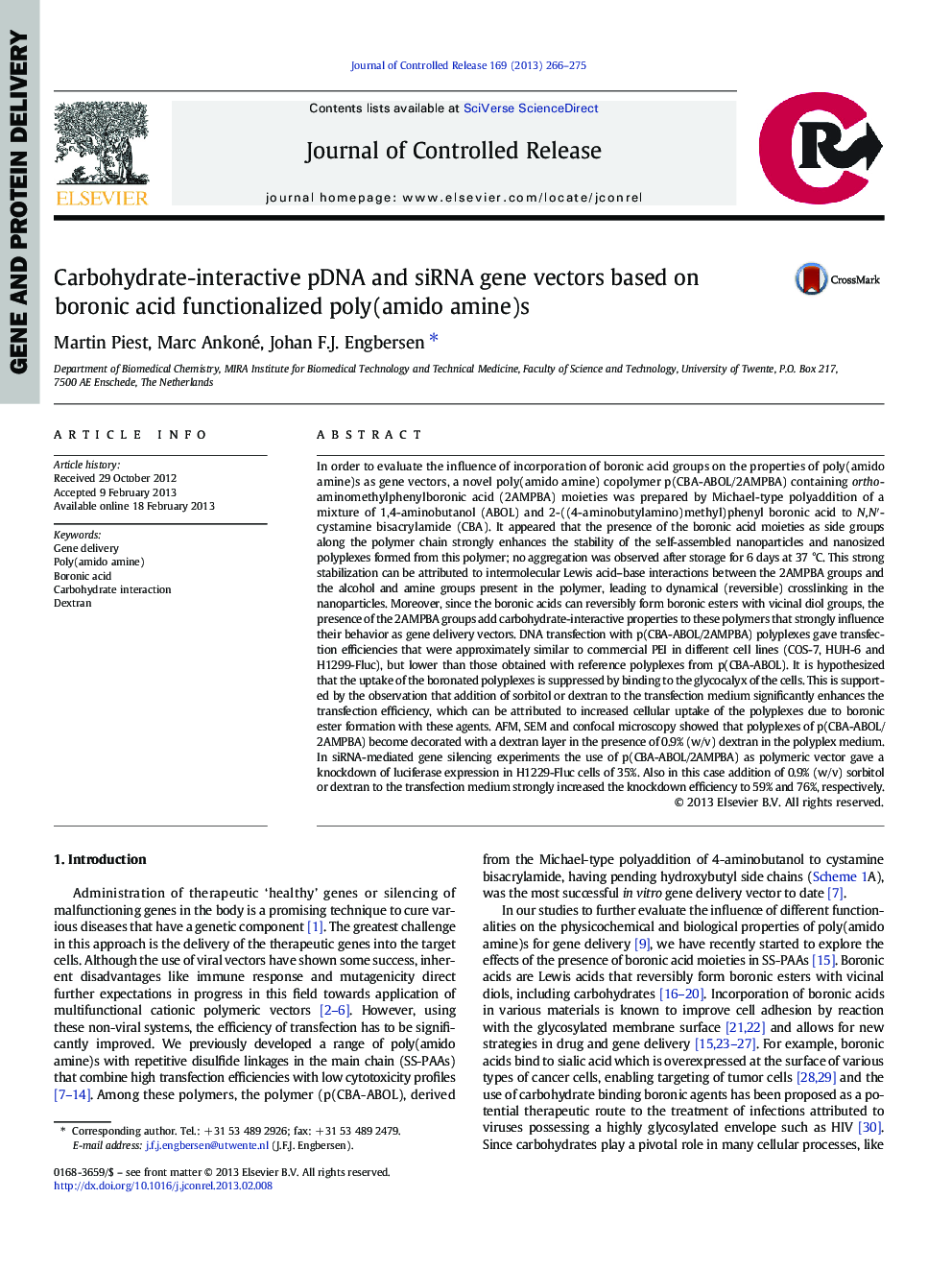| کد مقاله | کد نشریه | سال انتشار | مقاله انگلیسی | نسخه تمام متن |
|---|---|---|---|---|
| 1424165 | 986703 | 2013 | 10 صفحه PDF | دانلود رایگان |

In order to evaluate the influence of incorporation of boronic acid groups on the properties of poly(amido amine)s as gene vectors, a novel poly(amido amine) copolymer p(CBA-ABOL/2AMPBA) containing ortho-aminomethylphenylboronic acid (2AMPBA) moieties was prepared by Michael-type polyaddition of a mixture of 1,4-aminobutanol (ABOL) and 2-((4-aminobutylamino)methyl)phenyl boronic acid to N,N′-cystamine bisacrylamide (CBA). It appeared that the presence of the boronic acid moieties as side groups along the polymer chain strongly enhances the stability of the self-assembled nanoparticles and nanosized polyplexes formed from this polymer; no aggregation was observed after storage for 6 days at 37 °C. This strong stabilization can be attributed to intermolecular Lewis acid–base interactions between the 2AMPBA groups and the alcohol and amine groups present in the polymer, leading to dynamical (reversible) crosslinking in the nanoparticles. Moreover, since the boronic acids can reversibly form boronic esters with vicinal diol groups, the presence of the 2AMPBA groups add carbohydrate-interactive properties to these polymers that strongly influence their behavior as gene delivery vectors. DNA transfection with p(CBA-ABOL/2AMPBA) polyplexes gave transfection efficiencies that were approximately similar to commercial PEI in different cell lines (COS-7, HUH-6 and H1299-Fluc), but lower than those obtained with reference polyplexes from p(CBA-ABOL). It is hypothesized that the uptake of the boronated polyplexes is suppressed by binding to the glycocalyx of the cells. This is supported by the observation that addition of sorbitol or dextran to the transfection medium significantly enhances the transfection efficiency, which can be attributed to increased cellular uptake of the polyplexes due to boronic ester formation with these agents. AFM, SEM and confocal microscopy showed that polyplexes of p(CBA-ABOL/2AMPBA) become decorated with a dextran layer in the presence of 0.9% (w/v) dextran in the polyplex medium. In siRNA-mediated gene silencing experiments the use of p(CBA-ABOL/2AMPBA) as polymeric vector gave a knockdown of luciferase expression in H1229-Fluc cells of 35%. Also in this case addition of 0.9% (w/v) sorbitol or dextran to the transfection medium strongly increased the knockdown efficiency to 59% and 76%, respectively.
Figure optionsDownload high-quality image (153 K)Download as PowerPoint slide
Journal: Journal of Controlled Release - Volume 169, Issue 3, 10 August 2013, Pages 266–275